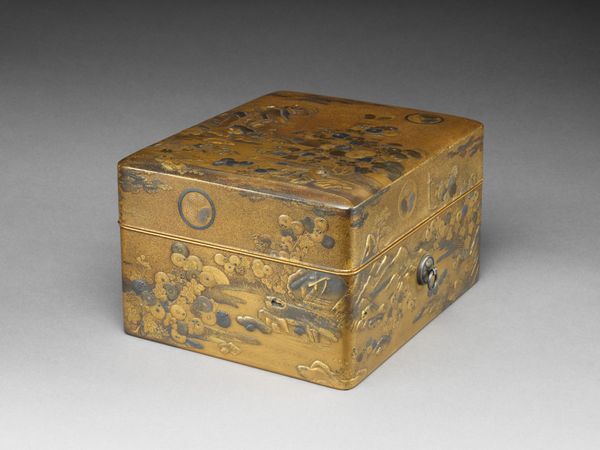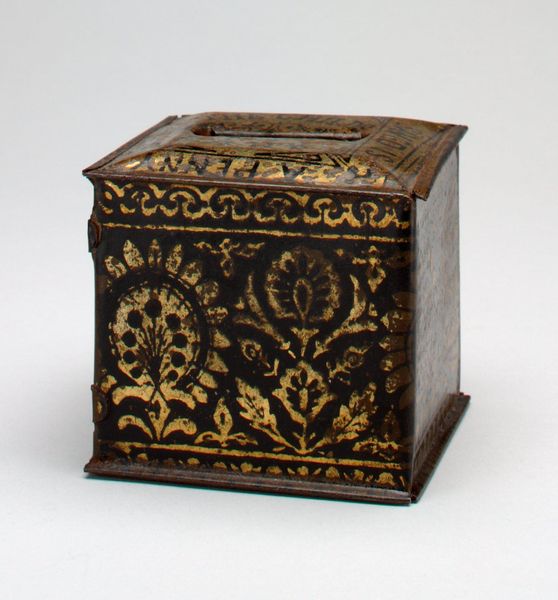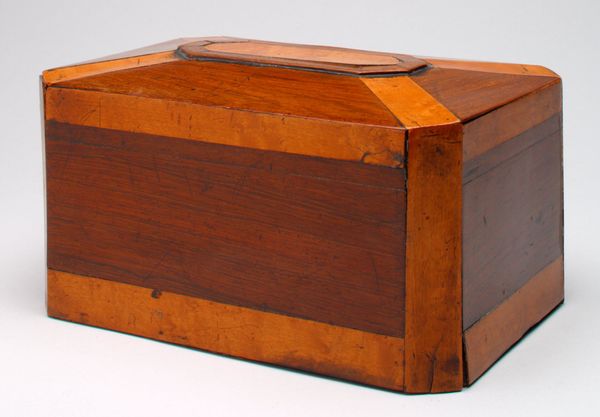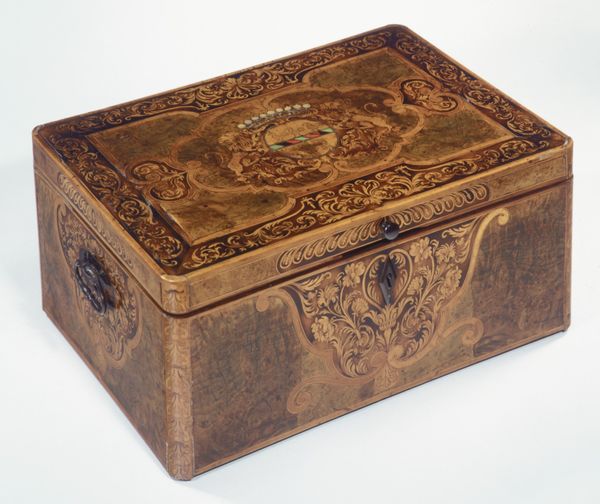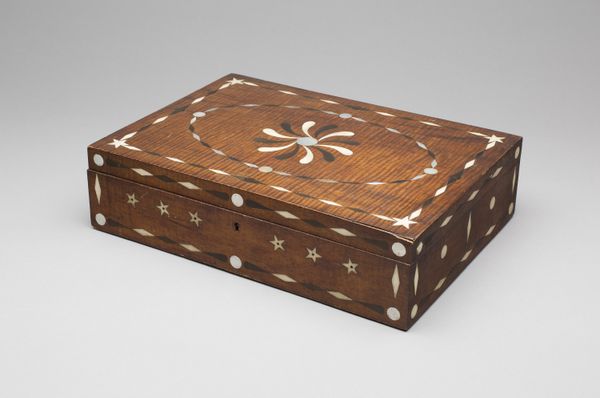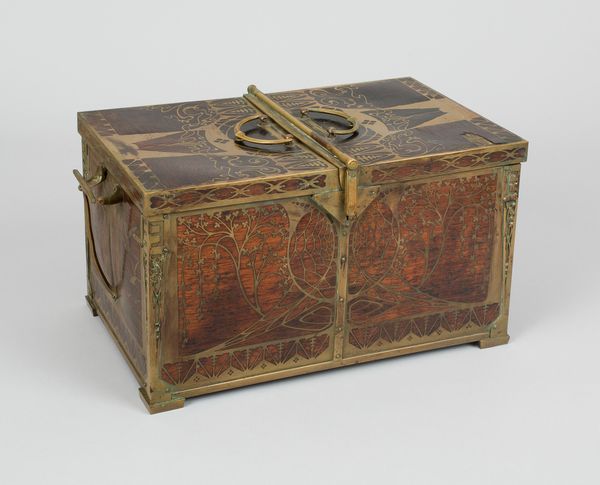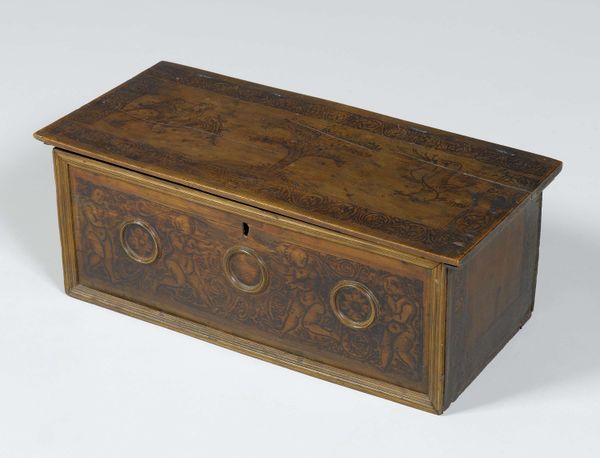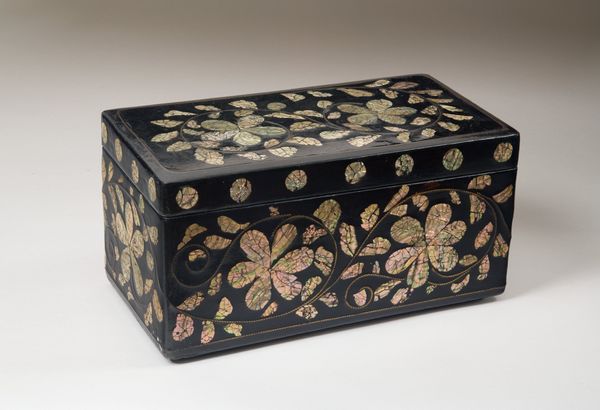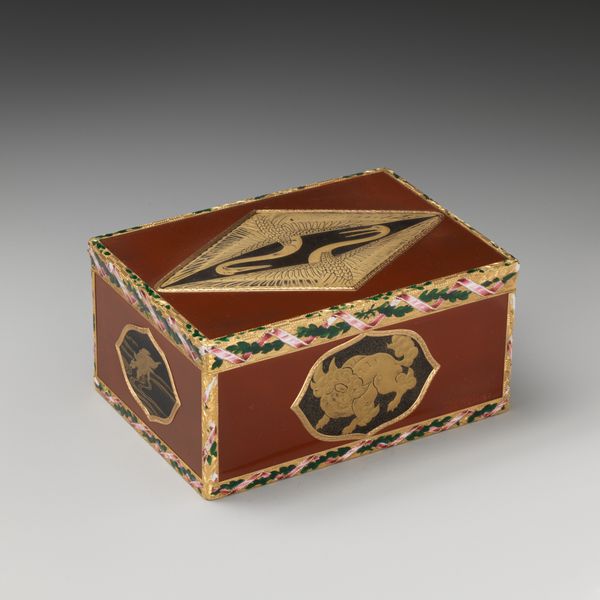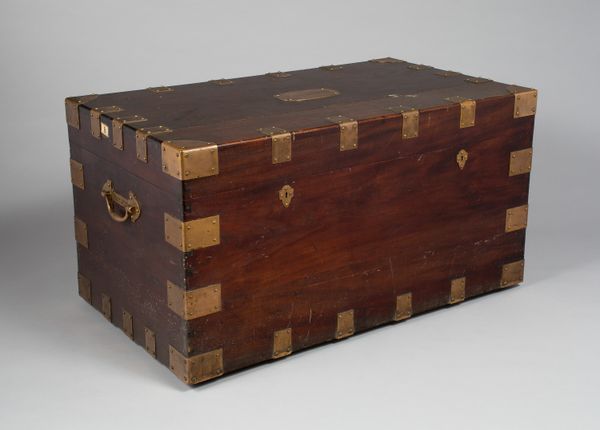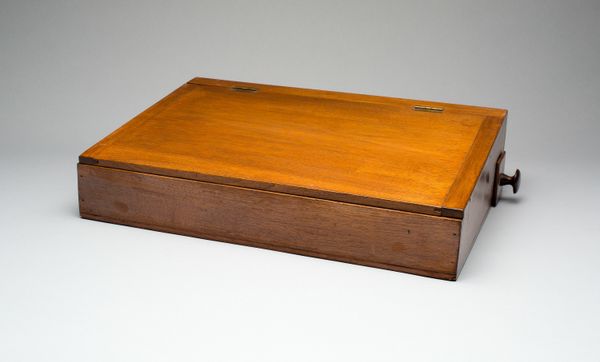
Writing box with Wedgwood abolitionist medallion c. 1790
0:00
0:00
mixed-media, wood, ivory
#
portrait
#
neoclacissism
#
mixed-media
#
stoneware
#
england
#
wood
#
history-painting
#
decorative-art
#
ivory
#
miniature
Dimensions: 2 5/16 x 4 5/8 x 2 5/8 in. (5.87 x 11.75 x 6.67 cm)
Copyright: Public Domain
Curator: Here we have a writing box from around 1790, embellished with a Wedgwood abolitionist medallion. It's quite an object. Editor: The immediate feel is one of surprising intimacy. The overall honeyed tones are appealing and mellow and at first glance, belie a more urgent narrative. Curator: Indeed. What’s remarkable here is how this decorative object intersects with profound moral issues of the late 18th century. This writing box, a mixed-media piece incorporating wood, ivory, and stoneware, isn't merely functional; it's a statement. The box itself is crafted in the decorative style characteristic of England. Editor: The meticulous craftsmanship suggests both refinement and accessibility; the woodworked design is striking! The layers remind me a little of tightly-rolled dreams, pressed together with hope. Then the central medallion pulls focus… Curator: The medallion, positioned like a seal of truth, references Josiah Wedgwood's iconic anti-slavery cameo. He mass-produced these cameos depicting a kneeling, chained African man with the plea "Am I Not a Man and a Brother?". These powerful images became emblems of the abolitionist movement. Editor: It's a potent example of Neoclassical imagery put to political use, connecting to the philosophical arguments of universal rights and equality that swept through Europe. The craftsmanship feels like a contradiction to me. Such pain enshrined within elegance feels deeply uncomfortable. Curator: That tension is crucial! Objects like this writing box served as conversation starters within privileged society. The box’s function, holding the tools for letter writing, transformed personal correspondence into a potential act of activism. Each letter written from this box becomes a vote towards change. Editor: I think it throws a piercing light on the complexities of engaging with social issues then and now. There's an ongoing conversation about how we, particularly those with privilege, navigate the ethical tightrope of luxury and conscious living. The question lingers, is it possible to advocate for abolition from the trappings of aristocracy? Curator: I feel such an object holds layers upon layers of context: aesthetic pleasure alongside a desperate call for social reform, transforming the act of writing into something revolutionary. Editor: Seeing the intersection of art, history, and ethics compressed into a single object, well, it certainly challenges my own comfort and perspective.
Comments
No comments
Be the first to comment and join the conversation on the ultimate creative platform.

